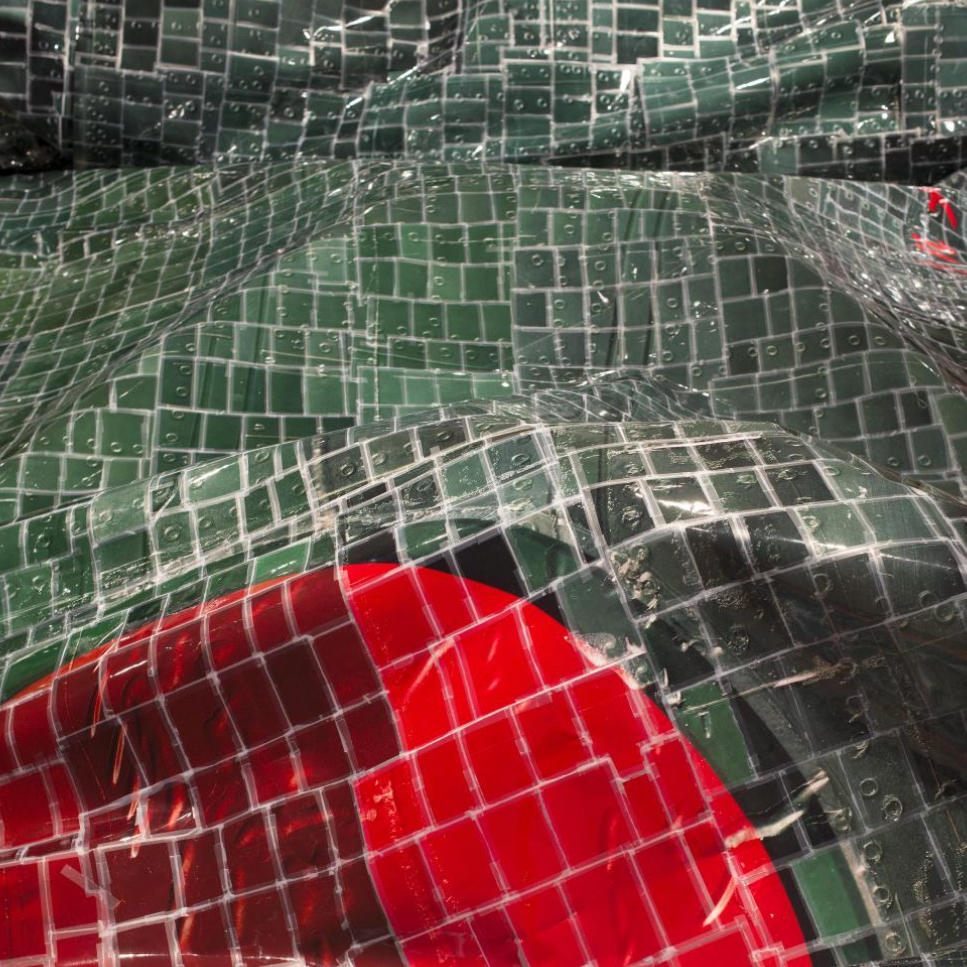
Katsushige Nakahasi, The Zero (detail), 2001. 25,000 color photographs, adhesive tape, bubble wrap, wooden armature, manual for rebuilding, negatives. Photo by Evan LaLonde.
ZERO PROJECT: A recent gift to the Reed College Art Collection by the Peter Norton Collection
Image Gallery Exhibition FileDecember 8 - February 21, 2016
Katsushige Nakahashi’s ZERO PROJECT transforms the museum into a space of collaborative making. Following Nakahashi’s detailed instructions, the Cooley Gallery is building the artist’s life-size sculpture of a Mitsubishi A6M Zero warplane, the aircraft flown by Imperial Japanese Navy kamikaze pilots during WWII. Visitors are invited to participate in constructing the work:
Hours: Tuesday – Sunday, 12 to 5 pm, closed Monday
Groups and classes welcome
Please email cooley@reed.edu to visit
Groups and classes welcome
Nakahashi conceived ZERO PROJECT in response to his experience of Japanese denial about the country’s actions during WWII. He describes the work as a vehicle for communal memory, not just about Japanese history, but about trauma and sacrifice in general. Nakahashi’s father worked as a Zero mechanic during the war, and witnessed the detonation of the atomic bomb in Nagasaki in 1945.
Nakahashi based his Zero on a model plane he played with as a boy. Photographing a similar model with a macro lens, he then scaled the plane to its actual dimensions. Nakahashi’s Zero consists of 25,000 color photographs joined by various kinds of tape. Each iteration of the plane results in a very different artwork. At the close of the project, the Zero must be burned, carried from the museum to its destruction site. Nakahashi describes the ritual burning of the plane as a “return to zero,” a cleansing and healing release: “The work is completed only at the point when it is reduced to ashes, but when the ashes are taken up by the wind, and the scorched grass begins to re-grow, these processes are also all part of the artwork …”
From 1999–2009, Nakahashi built nineteen Zeros in Japan, the US, and Australia. In 2009, he retired as the maker of the sculpture and transformed the work into a set of instructions. Nakahashi intends for the collective activity of making the Zero to inspire cooperation and reflection. Nakahashi states: “By looking back at the past, a spirit of forgiveness, intelligence, and respect for a better future will emerge.”
Nakahashi’s Zero is neither precious nor permanent; nor is it an authentic documentary object. Its “realness” dwells in the ways it eschews mimesis in favor of experience. The photographs that comprise the plane evidence the artist’s intimate and highly personal looking. Their focus and color are irregular and inconsistent; they are printed at a photo shop, roll by roll, like family photos before the proliferation of digital media. The plane is like a zine—printed by common machines to preserve its imperfections and voice.
The exhibition includes a projection space for viewing related films that explore Japan’s post-war history, particularly 1960’s science fiction films that use special effects, animation, and large-scale props to envision fictional pasts and futures.
ZERO PROJECT is a gift of the Peter Norton Collection, part of a larger gift to the Reed College Art Collection, and part of a group of donations to college and university art museums across the country with a focus on supporting programs that highlight education, creative museum practice, and the use of contemporary art to engage diverse audiences.
Katsushige Nakahashi is a Professor of Sculpture at the Kyoto City University of the Arts. His work has been widely exhibited internationally.
